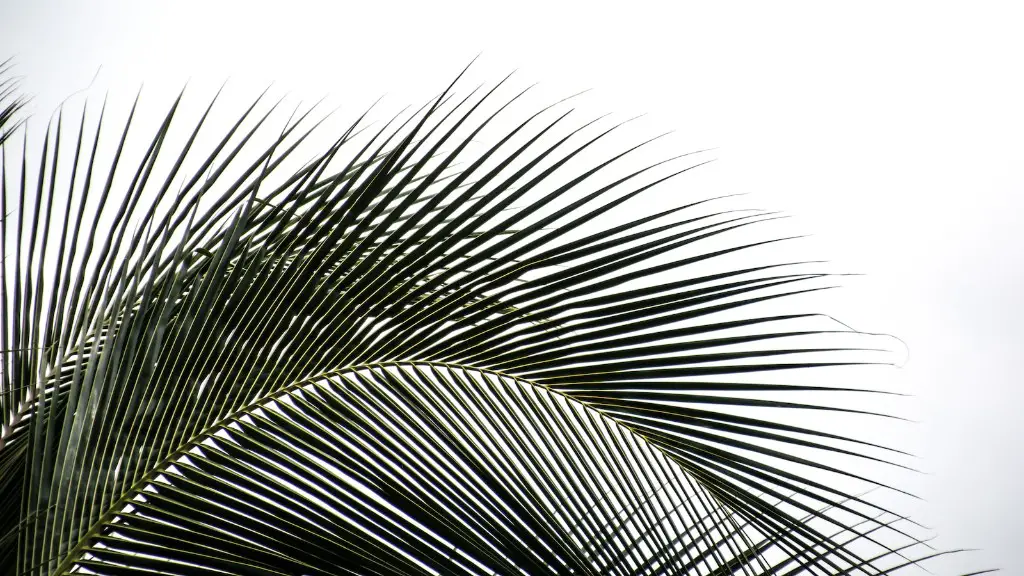Growing a honeycrisp apple tree can be an enjoyable experience that yields delicious, healthy treats. Honeycrisp apples are very popular because of their sweet and tart flavor, making them great for eating alone or cooking with. If you are searching for the best place to plant a honeycrisp apple tree, look no further. Here’s a comprehensive guide on how to choose the ideal spot for your tree.
1. Analyze Sunlight
It is important to choose a location for your honeycrisp apple tree that gets full, direct sunlight for at least 8 hours a day. Without sufficient sunlight, your tree will not properly mature and could experience stunted growth. If you’re unsure about the amount of daily sunlight your potential tree locations receive, use a sun calculator to help you better determine the amount of sunlight your location gets.
2. Consider Soil Type
The type of soil chosen for your honeycrisp apple tree is important for its growth and health. Well-draining soil is ideal, as heavy, clay-like soils can cause root rot. Therefore, pick an area with soil that is more sandy. If you’re unsure of the soil type, you can contact your local cooperative extension to have the soil tested.
3. Maximize Space
Make sure that you account for the full-grown size of the tree when selecting the planting site. Honeycrisp apple trees can grow upwards of 20 feet tall and spread around 15 feet in width. This means that they will require more space than smaller trees. Plant the honeycrisp tree far enough away from other objects, like a house or sidewalk, so that it can have enough room to grow.
4. Check for Competition
Underground, competing roots or weeds can cause a honeycrisp apple tree to waste its energy reserves, resulting in poor nutrition and stunted growth. To avoid such problems, it is ideal to plant your tree in an area that does not have any nearby trees, shrubs, or herbaceous plants. As an added bonus, removing nearby plants will also help the newly-planted honeycrisp apple tree receive more direct sunlight.
Analyze Shade
While it is important to find an area that receives ample sunlight, it is just as essential to find an area that is protected from strong winds, especially if the temperatures in your area plummet during the winter. A suitable location should be free of large structures such as buildings or other trees that cast shade. If the tree is planted in an area protected from strong winds, it can more easily survive tough winter months.
6. Check Drainage
Honeycrisp apple trees need evenly moist soil. As mentioned before, it is important to have well-draining soil, but planting the tree in an area that is too wet or dry can inhibit growth. To avoid this, check for any puddles or low spots in the soil, and make sure that the area chosen is not an area where water collects during rainfall.
7. Select Rootstock
The rootstock of your honeycrisp apple tree is an important factor to consider when planting. Depending on the environment and soil type, the rootstock may need to be changed. Additionally, if you plan on growing the tree in a dwarf or semi-dwarf form, the rootstock should be selected accordingly. Contacting a local nursery can help guide you in selecting the proper rootstock.
Mulch
Mulching the soil around a honeycrisp apple tree helps it to retain moisture, prevents weeds, and aids in protecting the roots during extreme temperatures. An ideal mulch layer should be several inches thick and be placed around the tree. Also, try to use a mulch composed of natural compost or wood chips – inorganic mulches, such as plastic or rocks, can actually reduce the growth of your tree.
Irrigation
Though honeycrisp apple trees will require less water as they become fully established, they are most successful when they are irrigated on a regular basis. It’s best to water slowly and thoroughly, preferably with a soaker hose, once or twice a week, depending on temperatures and other environmental factors. Adequate and appropriate irrigation will help your tree to thrive.
Weed Control
Weed control is essential for the growth of a healthy honeycrisp apple tree. The best way to prevent weed growth is to use a pre-emergent herbicide around the tree. This will help to prevent unwanted weed development and allow the tree to take in the nutrients it needs without having to compete with weeds for resources. Additionally, hand-pulling weeds around the tree is also an efficient way to help reduce weed growth.
Fertilizer
It is important to provide honeycrisp apple trees with the right nutrients in order for them to grow healthier and be more productive. Organic fertilizers are great for providing essential nutrients to your tree, and can be easily found in local garden stores. If you are unsure of what type of fertilizer to use, the local cooperative extension can help provide more guidance.



